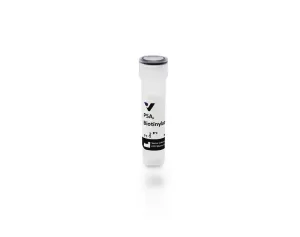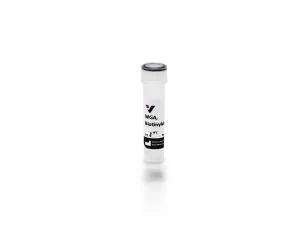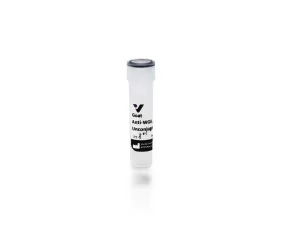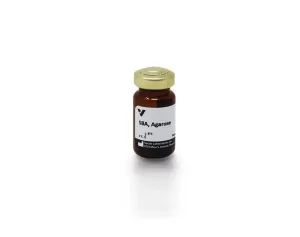Vector Laboratories is closed for the President’s Day on Monday, February 19th. We will be back in the office on Tuesday, February 20th.
We will respond to emails upon our return. Have a wonderful day.
Menu
Vector Laboratories is closed for the President’s Day on Monday, February 19th. We will be back in the office on Tuesday, February 20th.
We will respond to emails upon our return. Have a wonderful day.
Peanut agglutinin binds preferentially to the T-antigen, a galactosyl (β-1,3) N-acetylgalactosamine structure present in many glycoconjugates such as M and N blood groups, gangliosides, and many other soluble and membrane-associated glycoproteins and glycolipids. With certain exceptions, the receptor sequence for PNA is normally sialylated which prevents the lectin from binding to its receptor oligosaccharide (see Jacalin). Even sialic acid which is not bound directly to the receptor sugars may inhibit binding.
Biotinylated peanut agglutinin has an appropriate number of biotins bound to provide the optimum staining characteristics for this lectin. This conjugate is supplied essentially free of unconjugated biotins and is preserved with sodium azide.
| Unit Size | 5 mg |
|---|---|
| Applications | Immunohistochemistry / Immunocytochemistry, Immunofluorescence, Blotting Applications, Elispot, ELISAs, Glycobiology |
| Recommended Usage | DO NOT VORTEX. For most applications we recommend a freshly prepared working solution of 5-20 µg/ml in the below buffer. Use of buffers containing 0.1 mMCaCl2 and 0.01 mM MnCl2 is recommended. Inhibiting/Eluting Sugar: 200 mM galactose (S-9003). |
| Recommended Storage | 2-8 °C; Store frozen for long term storage |
| Inhibiting and/or Eluting Sugar | Inhibiting/Eluting Sugar: 200 mM galactose (S-9003). |
| Solution | 10 mM HEPES, pH 7.5, 0.15 M NaCl, 0.08% sodium azide, 0.1 mM CaCl2, 0.01 mM MnCl2 |
| Concentration | 5 mg active conjugate/ml |
| Conjugate | Biotinylated |
| Sugar Specificity | Galactose |
From our experience we have found that some lectins require Ca++ to be present for optimal binding activity. We suggest using calcium chloride (CaCl2) to fortify working solutions and ensure a minimum level of Ca++ is met. This may be particularly pertinent if using phosphate based buffers as diluents and storage solutions.
PNA is useful in distinguishing between normal and tumor tissues and in assessing malignancy in transitional mucosa. In addition, PNA binding can be used to measure cellular maturity in lymphoid tissues, to distinguish a variety of lymphocyte subpopulations in man and experimental animals, and to measure the levels of lymphoid cell populations in many diseases. PNA can be employed in the fractionation of stem cells in mice for use in bone marrow transplantation across histocompatibility barriers.
A major cell surface receptor for PNA may be asialo GM1 ganglioside. Since PNA shares specificity with the antibody to this glycolipid, PNA and the antibody can be used interchangeably in some applications. The presence of calcium ions in diluents can enhance the binding of PNA to receptors, possibly by neutralizing the negative charges on sialic acid residues adjacent to the receptor sequence.
This biotinylated lectin is an ideal intermediate for examining glycoconjugates using the Biotin-Avidin/Streptavidin System. First the biotinylated lectin is added, followed by the VECTASTAIN ABC Reagent, Avidin D conjugate, or streptavidin derivative.
Inhibiting/Eluting Sugar: 200 mM galactose
Applicable patents and legal notices are available at legal notices.




Stay in the Loop. Join Our Online Community
Together we breakthroughTM

©Vector Laboratories, Inc. 2024 All Rights Reserved.
How do I Request a Quote?
To request a quote for products: